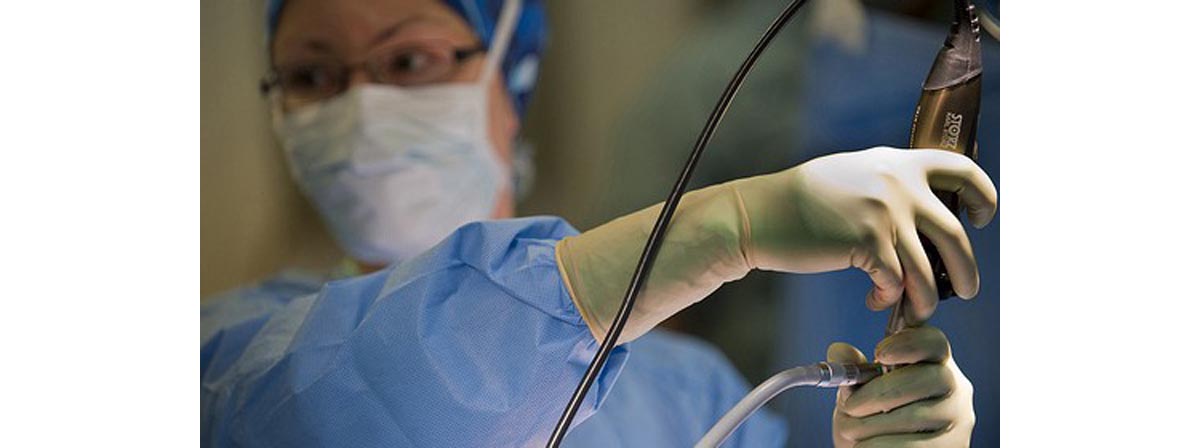Table of Contents
At a recent meeting of the the Society of American Gastrointestinal and Endoscopic Surgeons gastroenterologists reported their experiences in treating twenty-two volunteer patients with the HET Bipolar Forceps System, a surgical instrument made by HET Systems in Northvale, New Jersey.

How Do Doctors Use the New "Forceps?"
The procedure for using the instrument is relatively uncomplicated. Resembling an anuscope, the instrument the doctor uses to look up the anus, a surgical probe is placed just inside the anus, at the cushions of tissue that have become weak. The device generates bipolar radio waves that heat the defective tissue to a temperature of 55 to 60 degrees Celsius (131 to 140 degrees Fahrenheit) for less than 60 seconds (in the study, actual treatment times ranged from 7 to 26 seconds), and the probe is removed.
No Anesthesia Needed
There is no anesthesia (since there are no nerves where the device is placed), there is no cutting, and there is no blood loss. The unique feature of the device is that it can be placed in a part of the rectum where there are no pain receptors because it is designed to compress the appropriate tissues into a small area that is heated by the radio waves.
Complete Cure for Hemorrhoids in Most Cases
How well did the Bipolar Forceps System work? In this study of the device in the USA, 87% of patients no longer had bleeding and 68% of patients no longer had any sign of external hemorrhoids 4 weeks after the procedure. Two of the participants in the study (9% of patients) said that their hemorrhoid pain actually increased during the first month after the surgery.
Of the patients who were available for follow-up 13 months after the operation, all but one (95%) were free of bleeding and in 95% all hemorrhoid symptoms were resolved. In all, 100%, of the patients seen a year after the intervention, however, external hemorrhoids had disappeared.
Compared to the older style of hemorrhoid surgery that required 1 to 3 hours under general anesthesia and up to two weeks in the hospital, the Bipolar Forceps System is a major improvement in medical technique.
Are there any limitations to the use of this new technique?
So far, the method has only been studied in patients who had Stage I or Stage II hemorrhoids, that is, patients whose hemorrhoids cannot be pushed back into the anus. These are smaller hemorrhoids that are less likely to cause major bleeding or unrelenting pain. However, given the overwhelming success of the device in its clinical trial, the Food and Drug Administration has approved its sale in the USA.
The American-made system is not the only radio frequency device available. In the European Union, there is also a German-made device called Celon PRECISION that got even better results in a clinical trial in the Czech Republic. If you are looking for painless treatment of early-stage hemorrhoids however, ask your doctor about the possibilities of treatment with radio frequency ablation.
- Duben J, Hnatek L, Dudesek B, Humpolicek P, Gatek J. Bipolar radiofrequency-induced thermotherapy of haemorrhoids: a new minimally invasive method for haemorrhoidal disease treatment. Early results of a pilot study. Wideochir Inne Tech Malo Inwazyjne. 2013 Mar. 8(1):43-8. doi: 10.5114/wiitm.2011.30824. Epub 2012 Sep 29.
- Kantsevoy SV, Bitner M. Nonsurgical treatment of actively bleeding internal hemorrhoids with a novel endoscopic device (with video). Gastrointest Endosc. 2013 Jul 25. doi:pii: S0016-5107(13)01911-1. 10.1016/j.gie.2013.05.014.
- Photo courtesy of Jamie Drummond by Flickr : www.flickr.com/photos/20066223@N00/3827658280/
- Photo courtesy of U.S. Pacific Fleet by Flickr : www.flickr.com/photos/compacflt/5310348919/

